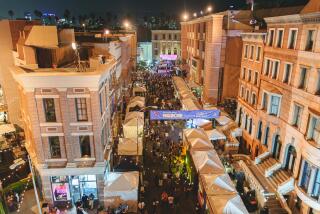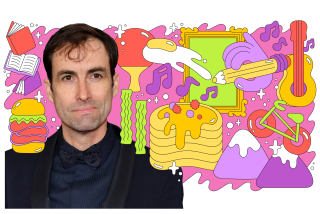Getting the shot: Shooting at twilight
We’re introducing a series of posts on food photography, sharing some of the tips and tricks to food styling and photography we use here at The Times. We received a number of great questions and interesting challenges from readers, which we will answer in upcoming posts. One query involved shooting at twilight.
In the photo gallery above, we include both formal and behind-the-scenes photos from a story we did on the evening ritual of aperitifs. This was one story we couldn’t shoot in the studio -- the natural glow of twilight can be so hard to re-create with artificial lighting. So we shot the story on the 4th floor of the Los Angeles Times building.
Food section designers, Test Kitchen staff and photographers ran through an early draft of the story, picking and choosing which dishes and drinks we would re-create for photos. Then we spent the day preparing dishes and drinks to have them ready for the right moment to capture on film.
Continue reading below for photographer Kirk McKoy‘s twilight photography tips, and check out the captions in the photos above to see where the tips are applied.
Questions or suggestions? Food photography challenge? Comment below or email Noelle Carter at noelle.carter@latimes.com.
Plan ahead - Scout out a few locations you think will make a good sunset shot a day or two before your shoot. Look for silhouettes that can add a mood to your photo.
Rule of thirds – Use the rule of thirds in your photography (background, middle ground and foreground.) It’s perfectly OK to break the rule by placing the food in the center of the photo, but be sure to have it in the foreground.
Depth of field - Use a wide angle for the shot. A wide-angle lens will give you majestic-looking landscape shots, room to see the food and the additional depth of field to get everything in focus. Having said that don’t forget to use a tripod. Set the camera to manual and take it off of auto exposure. You will be shooting at a high depth of field and at a very slow shutter speed.
The magic hour – Immediately after the sun sets, there is an amazing after glow in the sky that is called the “magic hour.” This is you prime shooting time (be aware the magic hour is really 30 minutes.)
Bracket you exposures – Don’t let your camera decide the shutter speed or aperture. Meter
the exposure and shoot under and over the metered exposure, approximately 4 stops. Sometimes the shot will be under exposed because the sky still has a lot of light. I prefer to use a continuous light source for this type of shot, but it’s perfectly fine to flash the scene. (Your flash will fill the foreground scene and give you a very pretty picture. The big thing to do is experiment a lot with your exposure.)
-- Kirk McKoy
ALSO:
Go behind the scenes at the Test Kitchen
Back to basics: Fried chicken, made at home
Browse hundreds of recipes from the L.A. Times Test Kitchen
More to Read
Eat your way across L.A.
Get our weekly Tasting Notes newsletter for reviews, news and more.
You may occasionally receive promotional content from the Los Angeles Times.











